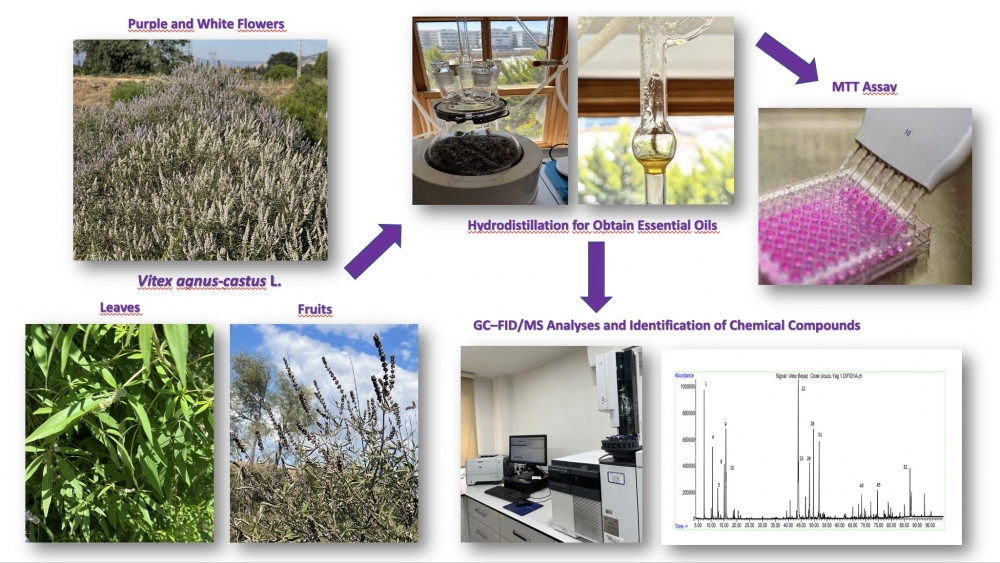JOURNAL 2761
Records of Natural Products
Year: 2023 Issue: 5 September-October
p.904 - 917
Viewed 2617 times.
-
Ebrar İnal

-
Ebru Özdemir Nath

-
Mahmoud Abudayyak

-
Şeyma Ulusoy

-
Hatice Akbal İnan

- Mahmut Cicek
-
Murat Kartal

GRAPHICAL ABSTRACT

ABSTRACT
The essential oil (EO) compositions and chemotypes of the important ethnomedicinal plant Vitex agnus-castus L. flowers, leaves, and fruits collected from Türkiye (Balıkesir and İstanbul) were identified in the present study. Different parts of the V. agnus-castus EO’s in-vitro cytotoxic effects on the MCF-7 (human breast adenocarcinoma) and A549 (human lung carcinoma) human-origin cell lines were anaylzed in the current study. The composition of hydrodistiled EOs extracted from flowers, leaves, and fruits of V. agnus-castus were analyzed by GC–FID/MS. Monoterpene hydrocarbons and oxygenated monoterpene compounds were detected as the predominant component class of the V. agnus-castus. EOs extracted from Balıkesir region were defined as the “α-pinene-1,8-cineole” chemotype, while EOs extracted from İstanbul region were defined as the “sabinene-1,8-cineole” chemotype. Sesquiterpene hydrocarbons constituted more than 20% of the compounds in the EOs extracted from the flowers. To the best of our knowledge, this study is the first to analyze the in-vitro cytotoxic effects of flowers. This study is also the first to show the in-vitro cytotoxic effects of fruit, the most commonly used part of the plant, EO on the MCF-7 cell line. Balıkesir region’s EOs were observed as more potent -especially the purple flower’s IC50 is about 4.68 µg/mL on the MCF7 cell line- than İstanbul regions, which might be attributed to the higher amount of α-pinene, caryophyllene, and limonene content. Our results indicated that the V. agnus-castus EOs, which contain α-pinene, 1,8-cineole, caryophyllene, and limonene as major components, showed relatively high cytotoxic effects compared to the control groups on the MCF7 and A549 cell lines.
KEYWORDS- Vitex agnus-castus L
- chasteberry
- essential oil
- cancer
- cytotoxicity